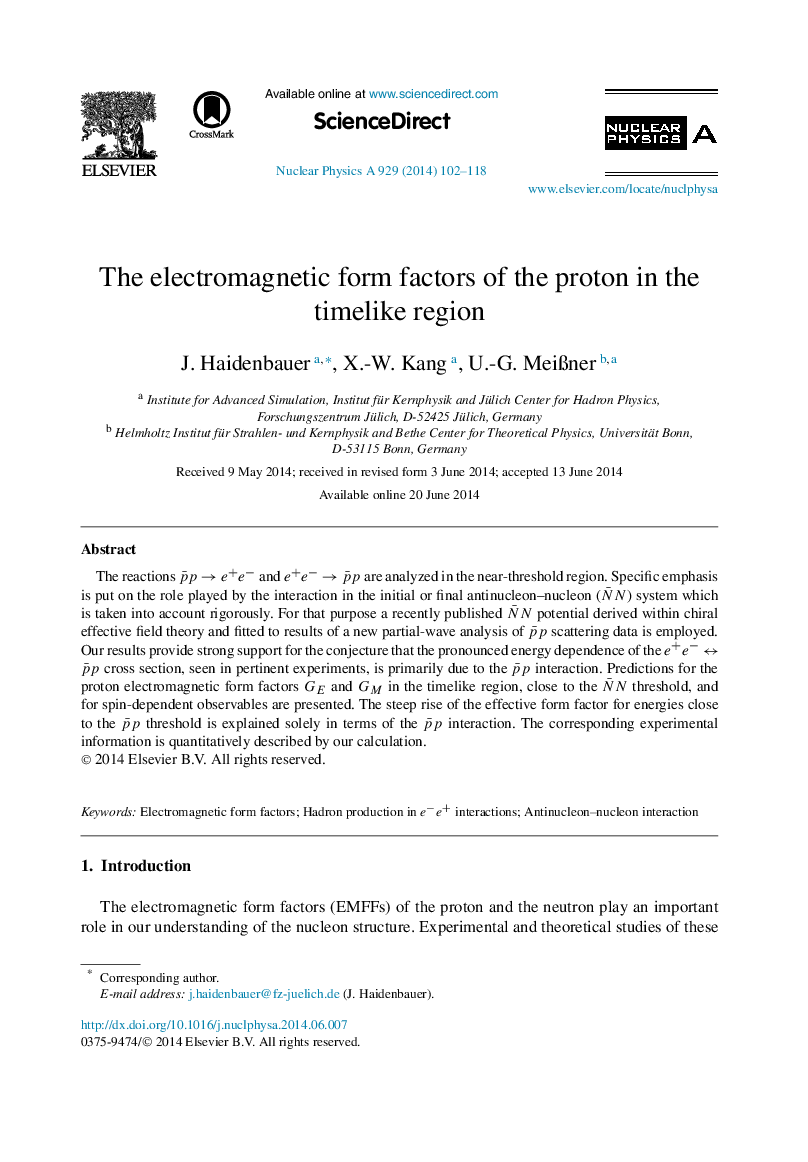| Article ID | Journal | Published Year | Pages | File Type |
|---|---|---|---|---|
| 8183106 | Nuclear Physics A | 2014 | 17 Pages |
Abstract
The reactions p¯pâe+eâ and e+eââp¯p are analyzed in the near-threshold region. Specific emphasis is put on the role played by the interaction in the initial or final antinucleon-nucleon (N¯N) system which is taken into account rigorously. For that purpose a recently published N¯N potential derived within chiral effective field theory and fitted to results of a new partial-wave analysis of p¯p scattering data is employed. Our results provide strong support for the conjecture that the pronounced energy dependence of the e+eââp¯p cross section, seen in pertinent experiments, is primarily due to the p¯p interaction. Predictions for the proton electromagnetic form factors GE and GM in the timelike region, close to the N¯N threshold, and for spin-dependent observables are presented. The steep rise of the effective form factor for energies close to the p¯p threshold is explained solely in terms of the p¯p interaction. The corresponding experimental information is quantitatively described by our calculation.
Keywords
Related Topics
Physical Sciences and Engineering
Physics and Astronomy
Nuclear and High Energy Physics
Authors
J. Haidenbauer, X.-W. Kang, U.-G. MeiÃner,
